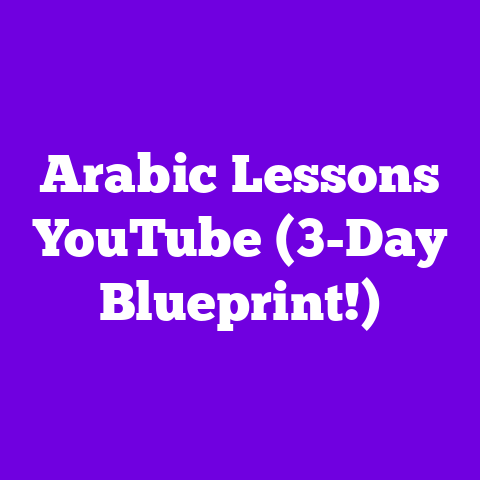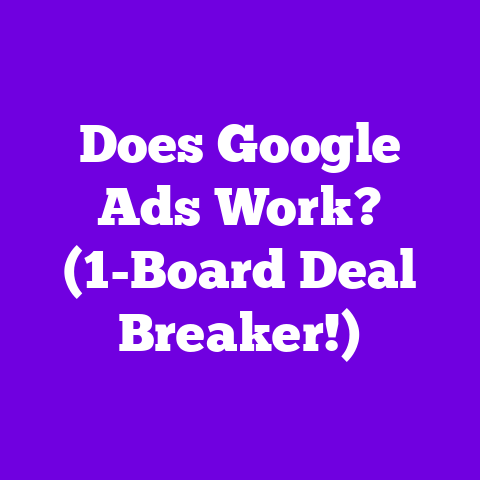Are YouTube Videos Commercial Use? (2×4 Secret!)
Unpacking the 2×4 Secret for 2025**
The Warning
Imagine this: You’ve poured your heart and soul
into your YouTube channel.
You’ve built a loyal following,
and your videos are finally taking off.
Then, BAM!
You get a dreaded notification:
a copyright strike, a demonetization notice,
or worse, a legal threat.
Why?
Sound scary?
It is!
As we barrel towards 2025,
understanding YouTube’s evolving policies
is absolutely crucial.
I’ve seen too many creators lose their channels
and income due to ignorance.
Don’t let that be you.
Let’s dive into the nitty-gritty of commercial use and how to protect yourself.
Section 1: Understanding YouTube’s Commercial Use Policies
Okay, so what exactly does “commercial use” even mean on YouTube?
In simple terms, it refers to using videos to generate revenue or promote a business, product, or service.
This includes:
- Monetization: Earning ad revenue through the YouTube Partner Program (YPP).
- Affiliate Marketing: Promoting products and earning commissions on sales.
- Sponsorships: Partnering with brands to create sponsored content.
- Selling Merchandise: Promoting and selling your own merchandise through YouTube.
But here’s the catch: not everything you do on YouTube is automatically considered commercial use.
That’s where things get tricky.
Key Terms You Need to Know:
- Commercial Use: Using videos to generate revenue or promote a business.
- Fair Use: Using copyrighted material for purposes like criticism, commentary, news reporting, teaching, scholarship, or research.
- Monetization: Enabling ads on your videos to earn revenue.
- Copyright: Legal protection granted to the creators of original works.
- Licensing: Obtaining permission to use copyrighted material from the copyright holder.
How YouTube’s Policies Have Changed:
Over the past few years, YouTube has been tightening its grip on commercial use.
I’ve noticed a few key shifts:
- Stricter Monetization Requirements: YouTube has raised the bar for joining the YPP, requiring creators to have at least 1,000 subscribers and 4,000 valid watch hours in the past 12 months.
- Enhanced Copyright Detection: YouTube’s Content ID system has become more sophisticated, making it easier for copyright holders to identify and claim infringing content.
- Focus on Originality: YouTube is increasingly prioritizing original content and penalizing channels that reupload or repurpose content without adding significant value.
These changes mean that creators need to be more vigilant than ever about understanding and adhering to YouTube’s policies.
Section 2: The 2×4 Secret Explained
Alright, let’s get to the good stuff: the “2×4 Secret” for understanding commercial use on YouTube.
I developed this framework based on my own experiences and observations as a creator, and I’ve found it to be incredibly helpful in navigating the complexities of YouTube’s policies.
The “2×4 Secret” breaks down into two distinct components: the “2” and the “4”.
The “2”: Two Primary Factors
These are the two main things YouTube looks at to decide if your video is commercial:
- Intent of the Creator: What’s your goal?
Are you trying to make money directly or indirectly from the video?
Are you promoting a brand, product, or service? - Type of Content: Is your video primarily
entertainment, education, or promotion?
Does it contain original content, or is it heavily reliant on copyrighted material?
The “4”: Four Key Questions
Now, let’s dig deeper with four questions you should ask yourself about every video you create:
- Is the content original or derivative?
Did you create the content from scratch,
or did you borrow heavily from other sources?
Derivative content is more likely to be flagged for copyright infringement or commercial use violations. - Are there any third-party materials used?
Did you use any music, video clips, images,
or other content that you didn’t create yourself?
If so, do you have the necessary licenses or permissions to use those materials? - What is the intended audience for the video?
Is your video targeted towards a general audience,
or is it specifically designed to promote
a product or service to a niche market?
Videos with a clear commercial intent are more likely to be scrutinized. - How does the creator monetize the video?
Are you running ads on the video?
Are you using affiliate links in the description?
Are you promoting your own products or services?
The more ways you monetize a video, the more likely it is to be considered commercial use.
By answering these four questions, you can get a much clearer picture of your video’s commercial use status.
Section 3: Real-World Examples and Case Studies
Let’s see the “2×4 Secret” in action with some real-world examples:
- Success Story: Educational Channel:
A channel that creates original animated
videos explaining complex scientific concepts.
They monetize their videos with ads, but their primary focus is on education.
They carefully license any third-party materials they use and avoid promoting specific products or services.
Why it works: The intent is educational, the content is original, and the monetization is not overly aggressive. - Failure Story: Compilation Channel:
A channel that reuploads popular video clips
from other sources without adding significant
commentary or analysis.
They monetize their videos with ads and affiliate links.
Why it fails: The content is derivative, they likely don’t have the necessary licenses, and the monetization is the primary focus. - Gray Area: Review Channel:
A channel that reviews products and services.
They monetize their videos with ads and affiliate links.
Why it’s tricky: The intent is both informational and promotional.
The key is to be transparent about any sponsorships or affiliate relationships and to provide honest, unbiased reviews.
Lessons Learned:
- Originality is Key: Creating original content is the best way to avoid copyright issues and demonstrate that you’re adding value to the YouTube ecosystem.
- Transparency Matters: Be upfront about
any sponsorships or affiliate relationships.
Disclose any potential conflicts of interest. - Respect Copyright: Always obtain the necessary licenses or permissions before using third-party materials.
- Focus on Value: Provide valuable content
that informs, educates, or entertains your audience.
Don’t just create videos for the sake of making money.
Section 4: The Impact of Copyright and Licensing
Copyright law is the foundation of content
creation on YouTube.
It grants creators exclusive
rights to their original works, including the right
to reproduce, distribute, and display their content.
As a creator, you need to understand your own copyright rights and the rights of others.
Creative Commons Licenses:
Creative Commons (CC) licenses offer a flexible way for creators to share their work while retaining some rights.
There are several types of CC licenses, each with different terms and conditions.
For example, a CC BY license allows others
to use your work as long as they give you credit.
A CC BY-NC license allows others to use your work
for non-commercial purposes only.
Protecting Your Own Content:
- Copyright Notice: Include a copyright notice on your videos and channel.
- Watermark: Add a watermark to your videos to discourage unauthorized use.
- Content ID: If you’re eligible, enroll your content in YouTube’s Content ID system to automatically detect and claim infringing content.
- Take Down Notices: If you find someone using your content without permission, send them a takedown notice.
Section 5: Future Trends and Considerations for 2025 and Beyond
Looking ahead to 2025 and beyond, I see several emerging trends that will impact commercial use on YouTube:
- AI-Generated Content: The rise of AI-generated
content will raise new questions about copyright
ownership and commercial use.
Who owns the copyright to a video created by an AI?
How should AI-generated content be monetized? - The Metaverse: As the metaverse becomes
more popular, creators will have new opportunities
to monetize their content in virtual worlds.
However, this will also raise new challenges related to copyright, licensing, and commercial use. - Decentralized Platforms: Decentralized
video platforms are emerging as alternatives
to YouTube.
These platforms offer creators more control over their content and monetization.
However, they also come with their own set of challenges.
Staying Ahead of the Curve:
- Stay Informed: Keep up to date with the latest changes to YouTube’s policies and industry best practices.
- Experiment: Don’t be afraid to experiment with new content formats and monetization strategies.
- Network: Connect with other creators and share your experiences and insights.
- Consult a Professional: If you’re unsure about any aspect of commercial use, consult with an attorney or legal professional.
Conclusion: The Importance of Staying Informed
Navigating the world of commercial use on YouTube can feel like walking a tightrope.
One wrong step, and you could face serious consequences.
That’s why it’s so important to stay informed, to understand your rights and responsibilities, and to make smart choices about your content.
By following the principles outlined in this article, you can protect your channel, build a sustainable business, and achieve your goals as a creator.
Call to Action:
Now, I want to hear from you!
What are your biggest challenges when it comes
to commercial use on YouTube?
Share your experiences and insights in
the comments below.
Let’s learn from each other
and build a community of informed creators!





